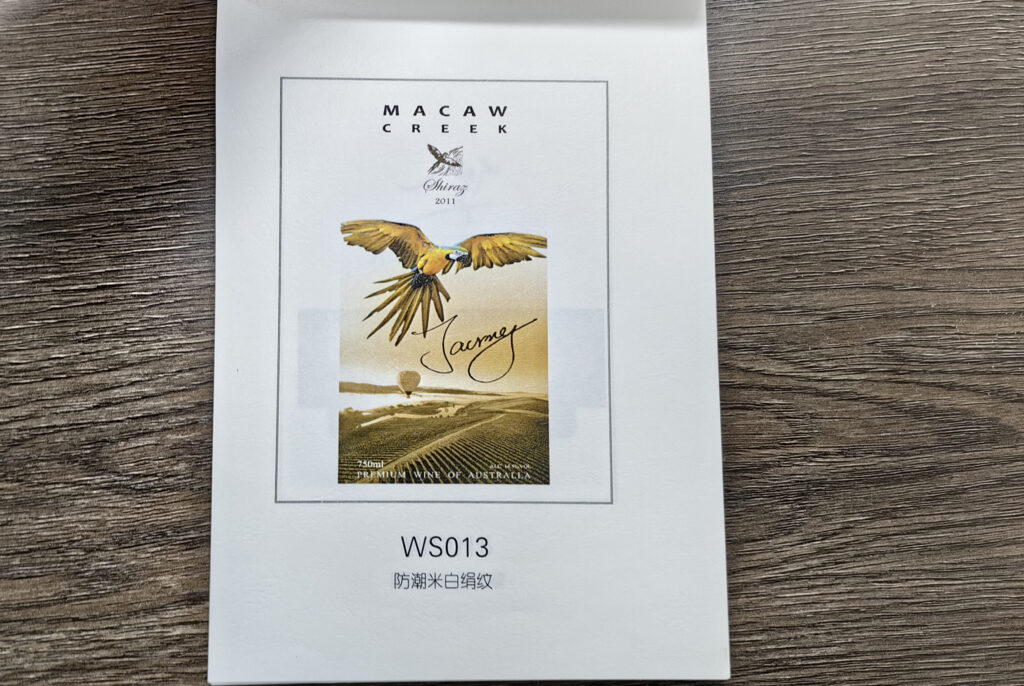When it comes to wine packaging, the label is not just a means of identification; it plays a crucial role in marketing and conveying the wine’s story. The choice of material for wine labels can significantly impact the overall presentation of the bottle and the consumer’s perception. Here, we explore the various materials used for wine labels, their benefits, and considerations.

1. Paper Labels
Description:
Paper labels are the most common type used in the wine industry. They come in various finishes, such as matte or glossy, and can be printed in vibrant colors.
Benefits:
- Cost-Effective: Paper labels are generally less expensive to produce.
- Versatile Printing Options: They can be easily printed with high-quality graphics, making them suitable for detailed designs.
- Eco-Friendly Options: Many paper labels are made from recycled materials or can be easily recycled themselves.
Considerations:
- Durability: Paper labels may not hold up well in humid environments or when exposed to moisture.
- Limited Texture: While they can be coated for a different feel, they lack the tactile richness of other materials.
2. Plastic Labels
Description:
Plastic labels, often made from polypropylene or polyester, are durable and resistant to moisture.
Benefits:
- Water Resistance: Ideal for wines that are stored in humid conditions or in ice buckets.
- Durability: Resistant to tearing and fading, ensuring the label lasts longer.
- Sleek Appearance: Offers a modern look that can appeal to contemporary consumers.
Considerations:
- Cost: Generally more expensive than paper labels.
- Environmental Impact: Some plastics are not recyclable, raising concerns about sustainability.
3. Metal Labels
Description:
Metal labels, usually made from aluminum or tin, provide a unique and luxurious feel to wine bottles.
Benefits:
- Premium Aesthetic: Metal labels can convey a high-end image, making them suitable for premium wines.
- Durability: Resistant to water and wear, ensuring longevity.
- Unique Branding Opportunities: The ability to emboss or engrave on metal adds a distinctive touch.
Considerations:
- Weight: Metal labels can add weight to the bottle, which may affect shipping costs.
- Cost: Higher production costs compared to paper or plastic.

4. kraft Labels
Description:
kraft labels are an innovative option that offers a rustic and authentic feel, often used for artisanal wines.
Benefits:
- Natural Aesthetic: Wood conveys a sense of tradition and craftsmanship, appealing to consumers looking for authenticity.
- Tactile Experience: The texture of wood adds a unique element to the wine-drinking experience.
Considerations:
- Durability: Wood may be susceptible to moisture and warping.
- Cost and Availability: More expensive and less common than other materials.
5. Biodegradable Labels
Description:
With the rise of sustainability, biodegradable labels made from natural fibers or compostable materials are gaining popularity.
Benefits:
- Eco-Friendly: These labels appeal to environmentally conscious consumers.
- Innovative Branding: Using sustainable materials can enhance a brand’s image and story.
Considerations:
- Performance: May not be as durable as traditional materials, particularly in humid conditions.
- Printing Limitations: Limited options for vibrant colors and detailed designs.
The choice of label material is essential for wineries looking to create a strong brand identity and connect with consumers. Each material offers unique benefits and drawbacks, making it important for winemakers to consider their brand image, target market, and environmental impact when selecting the right label. As the wine industry continues to evolve, innovative materials and sustainable options will likely shape the future of wine labeling.